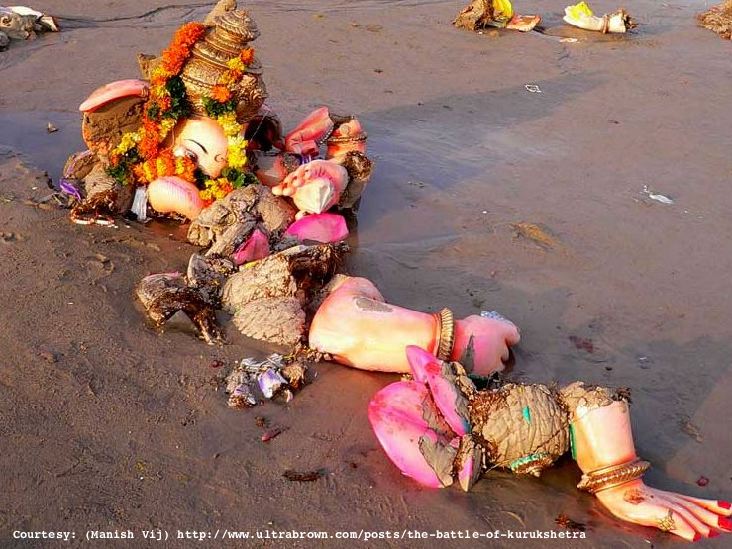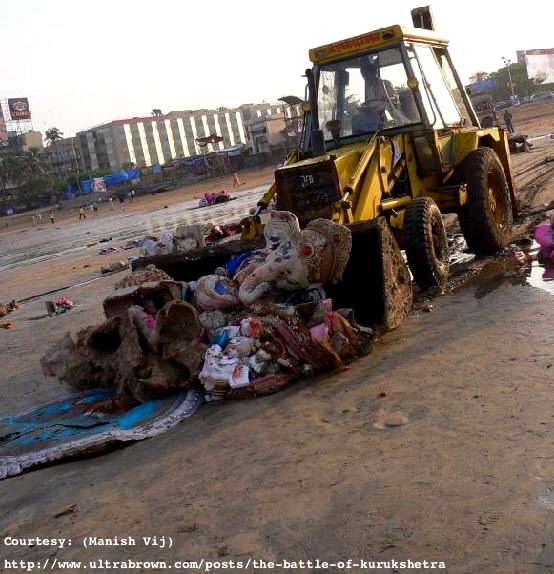There was a time when getting a job and buying a house were the landmarks of "stability" that people sought. Planning a family, making sure the paycheck covered everything from diapers to electricity bills and then setting some aside for a rare vacation was the ideal life. The middle class made ends meet and left a few overhangs for the luxuries. The rich, it was assumed, had money and didn't really need a job to make them happy. In the bustle of cosmopolitan life, job satisfaction had little place.
In Bombay, I grew watching people worn out by the commute and the work hours. Work was work and was not meant to be fun. Lately, however I have noticed a change, a change for the better. People are growing more explorative. They want to go after the dreams that would've been put onto the backburner, somewhere under the smoldering heap of responsibilities and duties. Now as the world becomes more accesible, a growing sense of aspirations and adventure is detectable among the younger generation. I hear of students venturing into fields such as mass communication, multimedia, fashion designing, journalism, life sciences, theatre arts, graphic design etc. It brings back memories of when I was at a juncture in my career, ready to make such choices.
I must've slept a total of two hours per day during my higher secondary school examinations in India. When the hard work finally paid off, social pressure was on again; this time scrutinizing my decisions for a lucrative career. Against all expectations, I joined the Pharmaceutical Sciences program in spite of securing the much coveted medical seat and admission into biomedical engineering, a field gaining momentum at the time. How much one scored became a matter of prestige and not just self-actualization. One's percentage, class, marks, grade was their label. Exam results hovered above our young, weary heads like a halo defining our future. People clucked at those who chose Arts over Sciences and shrugged in disbelief at the few who choose Life Sciences over Engineering. "Look, everybody is going to the US on the software bandwagon!" I was told. By the time I finished my undergraduate training, the software hype had fallen on its face and Silicon Valley was less lit up. Software engineers are still considered quite accomplished but only if they managed to find a niche that didn't get sweeped away when the boom collapsed. The social burden surrounding career choices still has not changed.
I remember the few bold ones who had ventured into the Arts when I had given in to social expectations and chosen the Sciences. Today I envy them for the diverse and creative fields they eventually received their calling in. Some are foreign language instructors, some theatre artists and a few others have mastered the culinary arts. I find myself constantly wondering what my life would've been had I picked poetry over public opinion.

Every year when the SSC and HSC results are announced, suicide rates among teenagers escalate. A significant portion of the parents' salaries is invested in tuition classes and competitive practice tests. A friend of mine who moved from India to the US, narrowly escaping the SSC fever once remarked that these exams were like "SATs on sterioids". I remember the pressure I felt eventhough my parents never pushed me into studying. I never had anyone breathing down my neck making sure that the grades didn't fall. My parents were more worried about the kind of person I would turn into. Principles, ideals, values and even sports took precedence over grades. In spite of this, I felt the heat. Neighbours, friends, their parents, newspapers, media, teachers, everybody seemed to be zooming in on the one aspect that apparently determined one's intellect and level.
I might get some flak for bringing this up but I believe that India's exam meritocracy has swallowed many a talent. People find it hard to digest that I as a cancer researcher with a biology background also take literature classes and am a creative writer. While one of my manuscripts is lined up for submission to a biomedical journal, yet another is a full-length chapbook for a poetry collection. While I edit pictures of cancer cells in lab one morning, I edit at night my beloved documentary films. They both bring me immense pleasure and whats more if I were ever to be frustrated or bored by one aspect, I always unwind by indulging in the other. This I say not to blow my own trumpet but to bring attention to the fact that I always find a few people who don't think there is something quite right with this odd miscellany of activities that keep me pleasantly occupied. It might as well be a coincidence, but most of these people are Indians. A couple of Indian professors once remarked quite pointedly about how my passion for poetry and literature could take away from the keen focus that is required in science. I asked them to recommend a manner by which I could instruct my brain to let the creative juices flow in a scientific direction while thwarting the ones channelized towards the arts. They could not answer that one.
The other day I happened to be home to watch an episode of the Oprah Winfrey show. A woman who looked barely thirty was talking about how she had pursued her dreams and stayed young as a result of the happiness she derived from doing this. She had started taking classes at a much later age and managed to successfully pursue a direction which she'd been told was a challenging one. How much later could it have been, I wondered. She looked so young. As if reading my mind, Oprah asked her how old she was. Sixty three, she replied and my jaw hit the floor. I wouldn't have gone so far as saying that her lack of aging was entirely due to her happy occupation but then they showed pictures of her from when she was unhappy in her work environment. If job dissatisfaction could be measured by wrinkles, let me just say, she was extremely dissatisfied and her face was a mirror of that discontent. It was then that I realized how much of that had been true for me. Ever since I have started writing, attending literary workshops and filming, I had been feeling happier, a lot more confident and content.
Plenty of success stories have been associated with calculated risk and diverse interests. Rohit Vishvanath, winner of CNN's Young Journalist Of The Year Award, an established business writer is also known for his interest in archeology. Few people know that Nana Patekar, the intense and passionate actor is also an expert sketch artist. R.K.Laxman, the noteworthy cartoon artist, was rejected from the J.J School of Arts. Lata Mangeshkar's first attempts at playback singing were dismissed by a film producer who criticized her voice of being "too thin". Satyajit Ray received his degree in Economics although his first love was fine arts. Fine arts ultimately was what led him to fame through his poignant films.
Putting job satisfaction above finances is impractical. But assuming that a creative occupation would automatically be less lucrative is an error in judgement. More often than not I see Indian parents encouraging their child to pursue a trodden path, devoid of risks, potential pitfalls. An adult who has been cushioned in this manner is least likely to respond well to an unexpected failure such as is common in a shifty economy. Intellect is not just defined by one's grades, percentages, marks and test scores. Intellect has greater bearings in creativity, expression and unique perspective. These manifestations of intellect put people above mediocrity and beyond the judging hum of the masses. You may very well be a university ranker, a class topper, a distinction holder, a summa cum laude with five degrees next to your name but the kind of immortality that creativity and individuality brings is far greater than having a value put to your intellect.
When children are asked who they want to become their answers range from pilot to gardener. Somewhere along the line this adventurous sentiment gets replaced by adult sensibilities. One of my very best friends used to tell me when she was hardly twelve that she wanted to speak German. Today she is a foreign language coordinator at a leading University and guess what? She speaks German and loves it. I admire her for doing what she truly wanted to do without letting adult interference affect her decision.
My father once told me of a boy in his neighbourhood who wanted to become a kite-maker while everybody else made plans to pursue engineering, physics, accounting and other such lucrative careers. My father narrated with a sheepish grin of all the times that he and his friends made fun of this boy for his child-like aspiration and his fascination with kites. When I grew up I came to know this man as the kite maker whose astounding collection of kites could be seen decorating Bombay's skies every Sankranti festival. Political party leaders came to have their emblems and logos printed on his kites during election season. Lovers would pay him to make a kite that proclaimed their love to the world over the majestic Arabian sea. His kites were not just kites. They were beautiful pieces of shimmering art. They had faces and personalities. There were sequined mermaids, cricket personalities, a map of India, birds, planes, fire engines and even lanterns built into the kite. He probably made enough money and was always in a cheery mood. His wife, children and brothers all worked in a tiny workshop crafting the wedding decorations, the styrofoam blimps, posters and of course the seasonal kites.
Believe me, I have met a lot of people with good salaries and impressive credentials whose names I will eventually forget but I will never forget the sight of that brilliant, life-sized kite that made its way into the sky, a fluorescent lamp in its belly, animating a sky during a starry Diwali night all those years ago. It soared across the sky like aspirations should.






